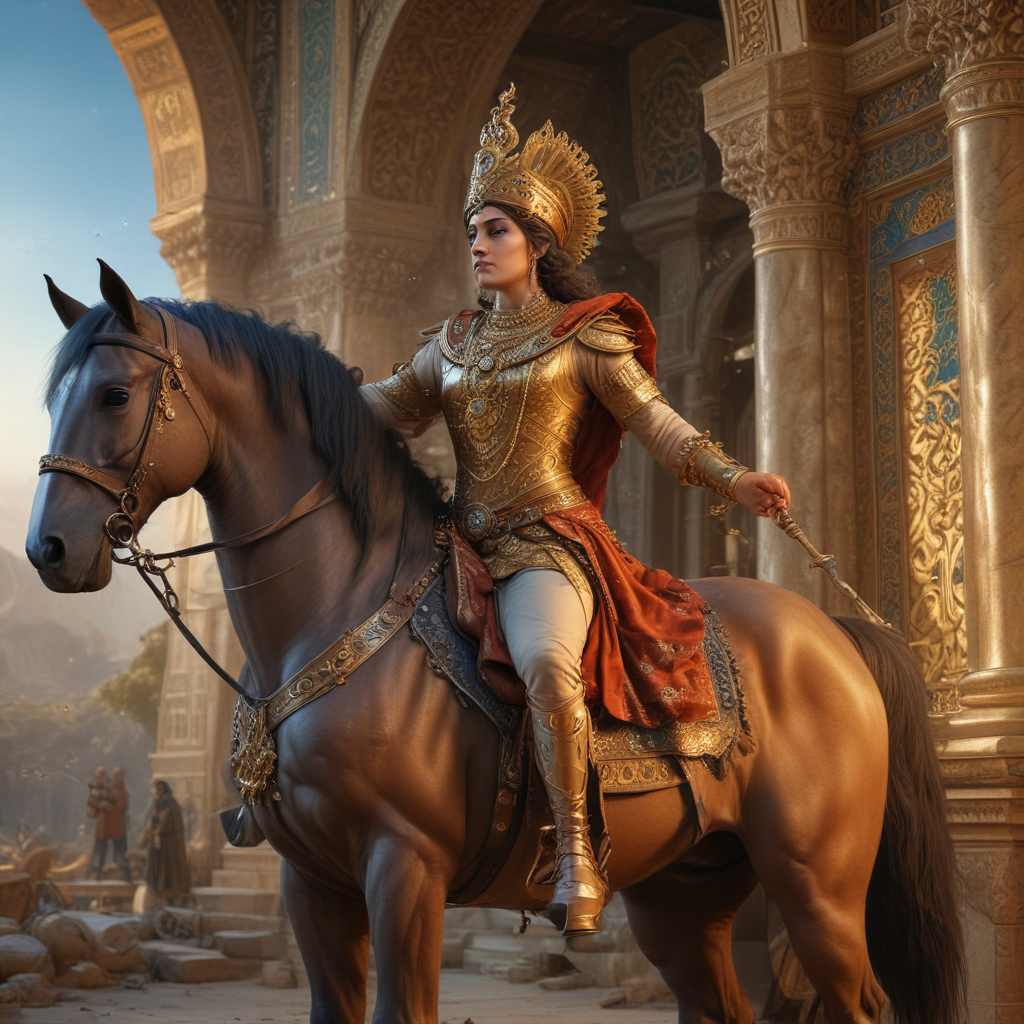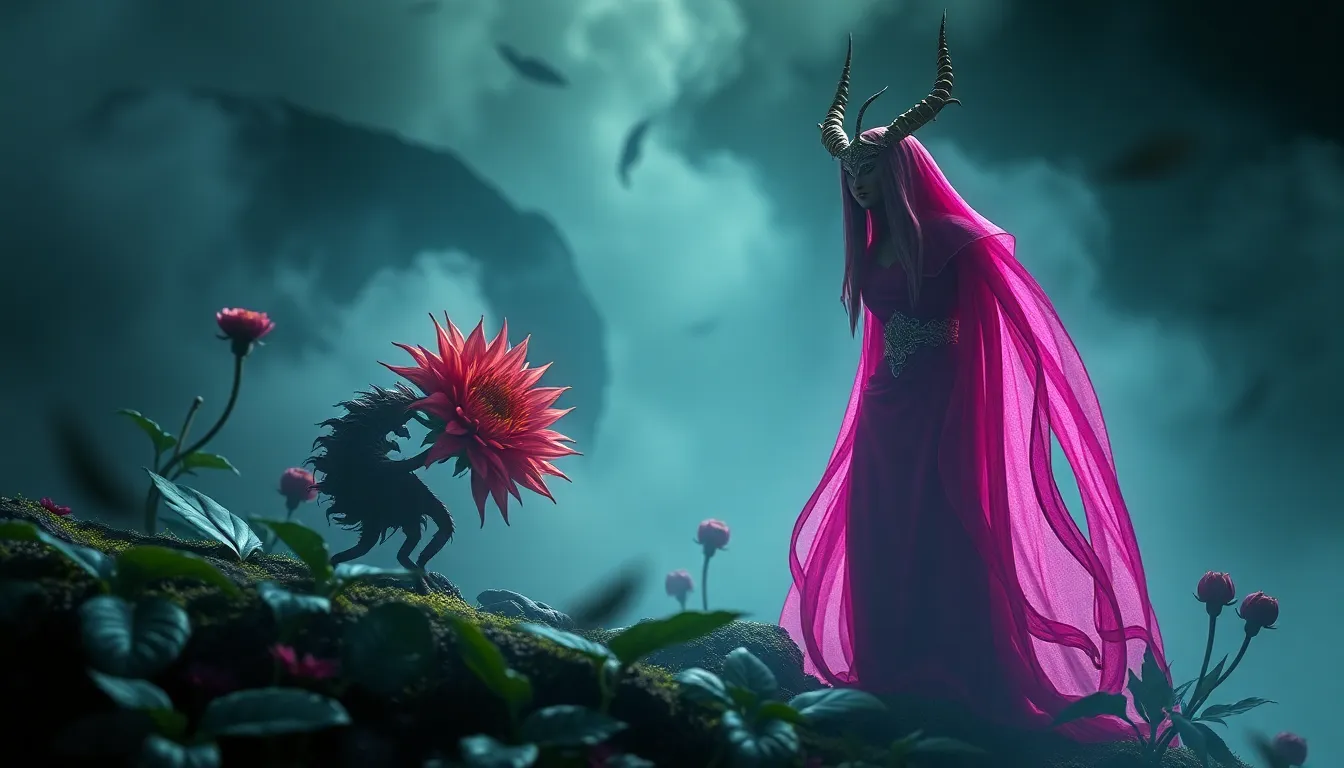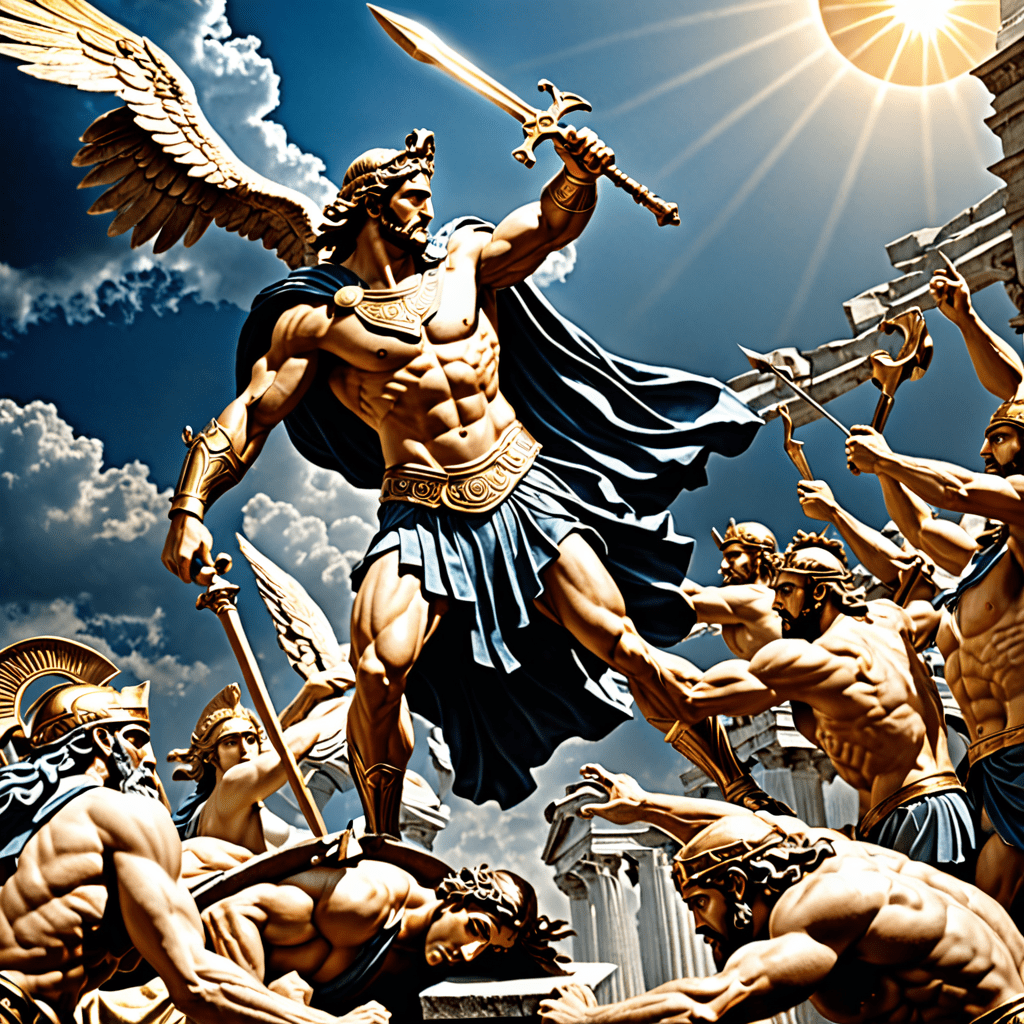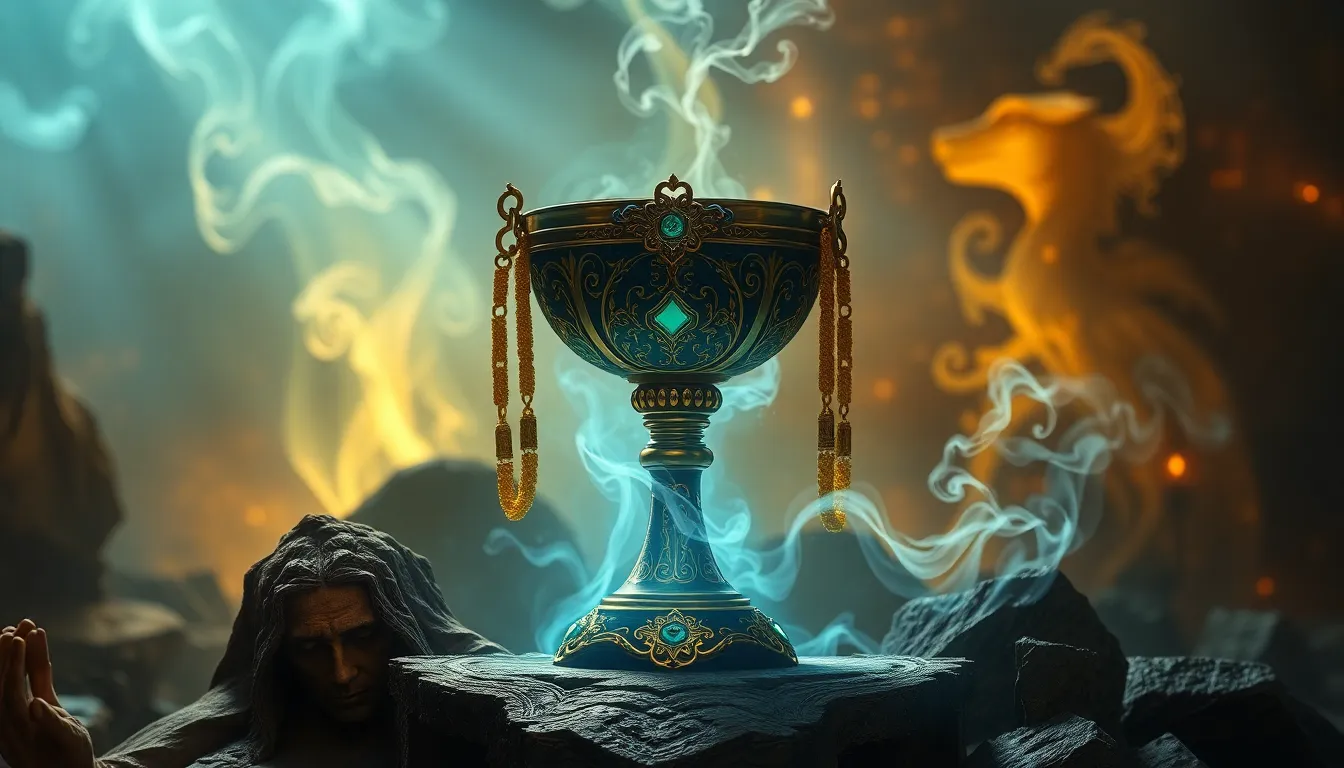The Tales of Transformation in Persian Mythology
1. Introduction
Persian mythology, with its rich tapestry of stories, offers a captivating glimpse into the ancient Iranian world. At the heart of these narratives lies the recurring theme of transformation, where heroes, divinities, and even landscapes undergo remarkable metamorphoses. These transformative tales not only entertain but also provide insights into the values, beliefs, and worldview of the Persians. By exploring these narratives, we can delve into the depths of human nature, witness the triumphs of heroes, and grasp the profound impact of change.
2. The Simurgh: A Symbol of Transformation
Among the most renowned figures in Persian mythology is the Simurgh, a colossal mythical bird often associated with transformation and guidance. In the epic poem Shahnameh, the Simurgh plays a pivotal role in the life of Zal, a hero born with white hair and abandoned by his father. Rescued by the Simurgh, Zal is carried to her nest atop Mount Alborz, where he is nurtured and educated. This transformative experience shapes Zal into a wise and courageous warrior. The Simurgh, through her nurturing and protective nature, embodies the power of transformative guidance, leading individuals towards their full potential.
3. Rostam and the White Div
The legendary hero Rostam, celebrated for his strength and valor, also encounters transformation in his epic adventures. In one such tale, Rostam confronts the White Div, a monstrous creature symbolizing evil and chaos. During a fierce battle, Rostam finds himself at a disadvantage. Realizing his need to evolve, he undergoes a symbolic transformation, shedding his earthly limitations and embracing his divine heritage. This metamorphosis grants him the power to vanquish the White Div, signifying the triumph of good over evil and the potential for inner transformation to overcome external challenges.
4. Kay Kavus and the Journey to the Sky
In a captivating tale of ambition and transformation, King Kay Kavus embarks on a perilous journey to the heavens. Driven by a desire to conquer the sky, he constructs a throne adorned with eagles, propelling himself above the clouds. However, his hubris leads him to neglect the eagles' instructions, resulting in a near-fatal crash. This transformative experience, characterized by a fall from grace and subsequent redemption, highlights the importance of humility and respect for divine forces. Kay Kavus's journey serves as a cautionary tale about the consequences of unchecked ambition and reinforces the value of humility in the face of the unknown.
5. The Seven Labors of Rostam
Throughout his heroic journey, Rostam faces seven arduous labors, each testing his physical and mental fortitude. These challenges not only showcase his strength and cunning but also contribute to his ongoing transformation. Each labor forces Rostam to confront his weaknesses, overcome adversity, and emerge a more refined hero. Whether slaying a dragon, rescuing a princess, or traversing a perilous land, Rostam's trials serve as metaphors for personal growth and the transformative power of overcoming challenges. They emphasize the importance of perseverance, courage, and self-discovery in the face of daunting obstacles.
6. Jamshid and the Cup of Life
In the realm of Persian mythology, Jamshid stands as a legendary king renowned for his pursuit of immortality. Seeking eternal life, he embarks on a quest for the mythical Cup of Life. However, his newfound power and knowledge lead to his downfall. Intoxicated by his achievements, Jamshid loses sight of his humanity and succumbs to pride and tyranny. His transformation from a benevolent ruler to an oppressive sovereign serves as a cautionary tale about the transformative effects of power and knowledge. It highlights the importance of humility and the dangers of unchecked ambition. Jamshid's story reminds us that even the pursuit of noble goals can lead to unforeseen consequences, and true transformation lies in balancing power with wisdom and compassion.
7. The Story of Zahhak and Fereydun
The epic saga of Zahhak and Fereydun unfolds as a tale of tyrannical rule and eventual liberation. Zahhak, a ruthless king, ascends to the throne through deceit and treachery. To maintain his power, he makes a pact with the devil, resulting in the emergence of two serpents from his shoulders, demanding daily sacrifices of human brains. Fereydun, a righteous blacksmith, emerges as the hero destined to overthrow Zahhak. Through courage and cunning, Fereydun defeats the tyrant, liberating the people from oppression. This transformative tale signifies the triumph of good over evil, highlighting the essential human yearning for freedom and justice. Zahhak's tyrannical reign underscores the destructive nature of cruelty and the transformative power of righteous rebellion.
8. The Myth of Anahita and the Waters of Life
Anahita, the revered goddess of water, embodies the transformative power of life-giving waters. In Persian mythology, she is associated with fertility, healing, and prosperity. Her presence brings forth abundant harvests, nourishes the land, and sustains all living beings. Anahita symbolizes the cyclical nature of life, death, and rebirth, reminding us of the transformative power of water in shaping and sustaining our world. Her myth emphasizes the interconnectedness of all living things and the essential role of water in maintaining balance and ensuring the continuation of life. Anahita's story serves as a reminder of the preciousness of water and the profound impact it has on our lives and the environment.
9. The Shahnameh: A Tapestry of Transformation
The Shahnameh, an epic poem by Ferdowsi, stands as a monumental work within Persian literature. Spanning centuries, it chronicles the history of Persia through a captivating tapestry of stories, weaving together tales of heroes, kings, and mythical creatures. At its core, the Shahnameh is a testament to the transformative power of human experience. It showcases the evolution of individuals, societies, and empires, highlighting the enduring impact of choices, actions, and consequences. Through its vast narrative, the Shahnameh offers timeless lessons about courage, resilience, justice, and the transformative nature of human existence.
10. Conclusion
The transformative tales of Persian mythology offer a rich tapestry of insights into the human condition. They explore the depths of ambition, courage, and the transformative power of knowledge, power, and adversity. These narratives remind us that change is an inevitable part of life, and individuals have the potential to shape their own destinies through their choices and actions. By embracing challenges, learning from mistakes, and striving for self-improvement, we can harness the transformative power within ourselves and create a more meaningful and fulfilling world.
FAQ
1. What are the common themes in Persian mythology?
- Transformation: Persian mythology is replete with stories of characters undergoing physical, mental, and spiritual transformations.
- Heroism: Epic heroes like Rostam and Fereydun embody courage, strength, and the pursuit of justice.
- Good vs. Evil: The battle between forces of light and darkness is a recurring theme, highlighting the human struggle against adversity.
- Fate and Free Will: The interplay between predetermination and individual agency is explored, questioning the extent to which we control our destinies.
- Moral Lessons: Many tales convey ethical teachings, emphasizing values such as truthfulness, generosity, and compassion.
2. What are some important figures in Persian mythology?
- Rostam: A legendary hero renowned for his strength, courage, and unwavering loyalty.
- Simurgh: A mythical bird symbolizing guidance, transformation, and divine intervention.
- Zahhak: A tyrannical king who represents cruelty, oppression, and the dangers of unchecked power.
- Fereydun: A righteous hero who liberates the people from Zahhak's tyranny.
- Kay Kavus: A king whose ambition leads him on a transformative journey to the heavens.
- Jamshid: A wise king who succumbs to pride and loses his immortality.
3. What are some popular stories in Persian mythology?
- The Seven Labors of Rostam: A series of perilous challenges faced by the hero,testing his resolve and shaping his identity.
- The Story of Zahhak and Fereydun: A tale of liberation from tyranny and the triumph of good over evil.
- The Myth of Anahita and the Waters of Life: A testament to the transformative power of water and its role in sustaining life.
- The Shahnameh: A vast epic poem chronicling the history of Persia and its legendary figures.
4. What are some lessons we can learn from Persian mythology?
- Embrace change and growth: Transformation is an inevitable part of life, and we can choose to view it as an opportunity for self-improvement.
- Be courageous and persistent: Overcoming challenges requires courage, resilience, and an unwavering belief in our abilities.
- Value justice and compassion: Strive to make a positive impact on the world and treat others with fairness and empathy.
- Learn from mistakes: Reflect on our choices and seek to grow from any missteps we may have made.
- Appreciate the power of knowledge: Seek wisdom and understanding, but remember to wield knowledge responsibly and ethically.



